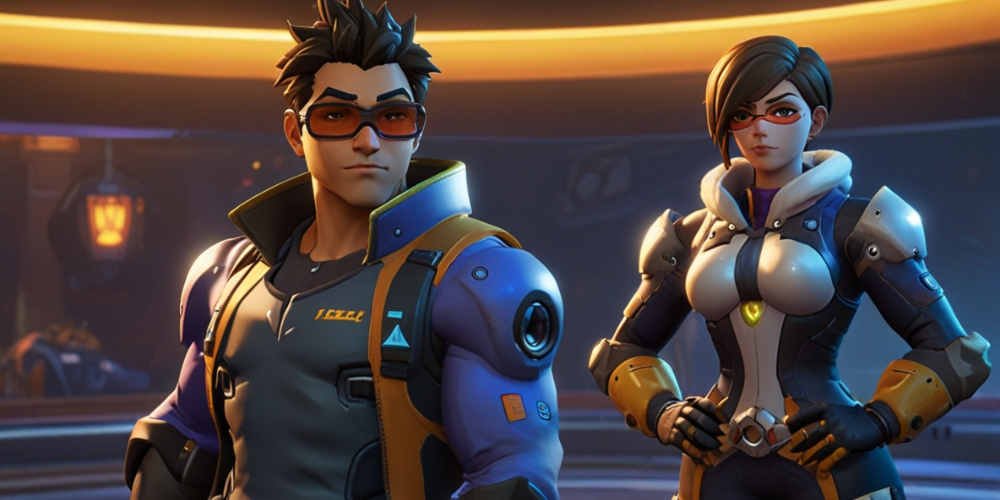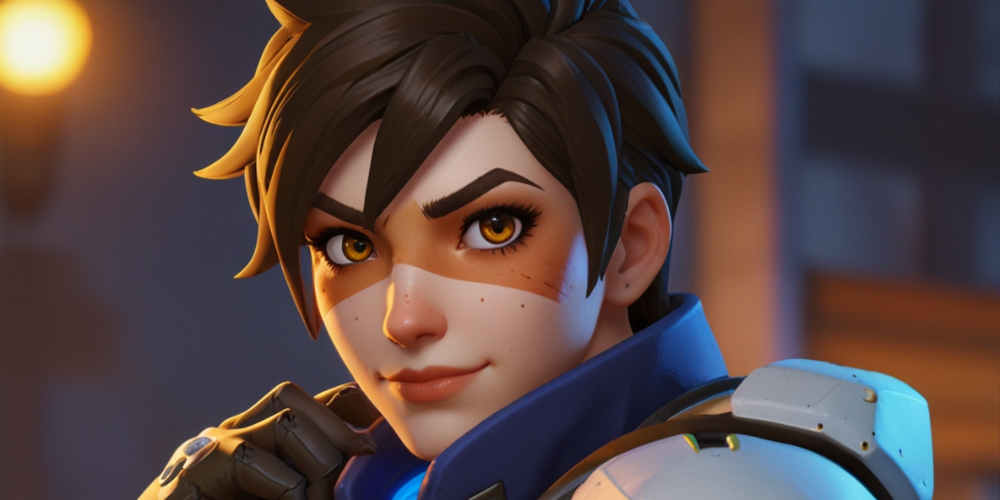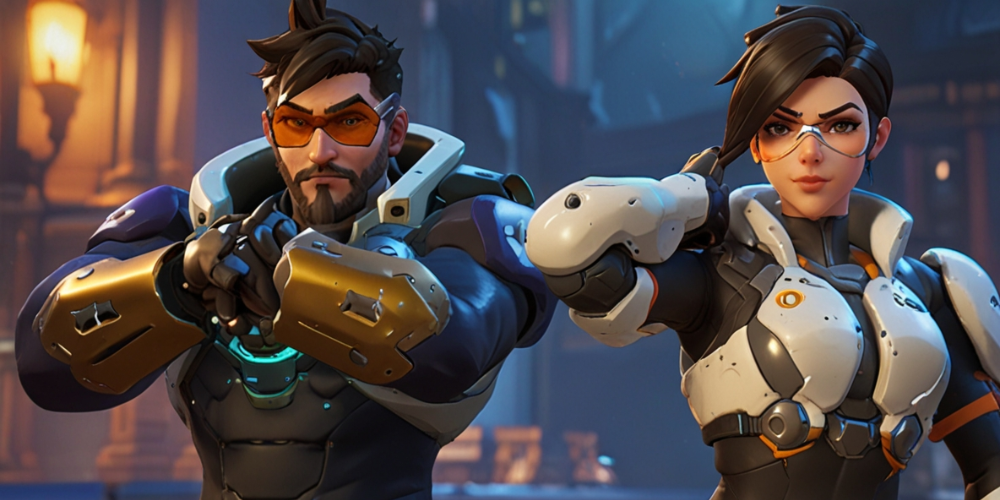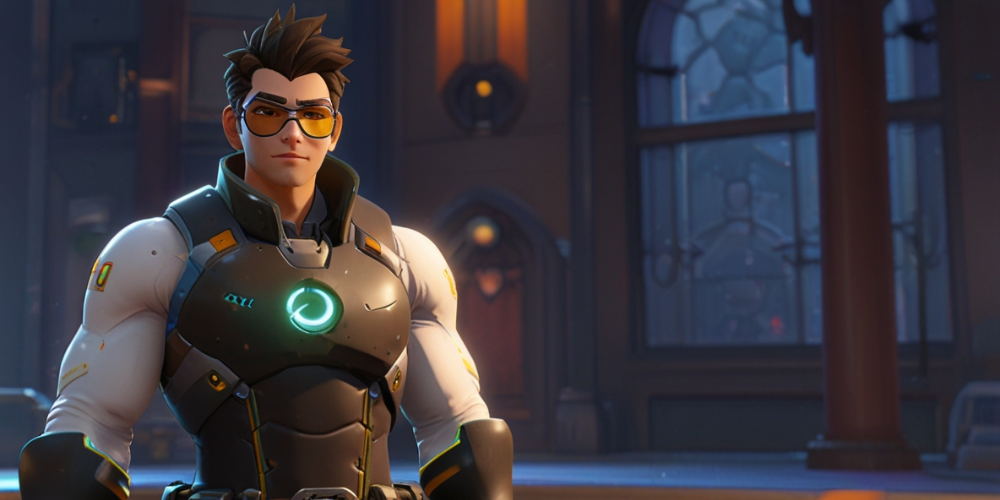
Overwatch offers a unique gaming experience where the outcome of each game heavily depends not just on players' skill and strategy but also on the selection of heroes. Every hero brings a distinct skill set and abilities that can significantly impact the game's course. To create a compelling synergy that amplifies your team's chances of clinching victory, selecting the most suitable heroes that fit perfectly into the team composition and the context of the match becomes essential.
This detailed guide aims to demystify selecting the perfect fit from Overwatch's diverse roster of game characters. We delve deep into the subtle nuances of choosing the ideal hero and how players can leverage this knowledge.
Everybody has a unique play style that defines how they approach the game. Contemplating this within the stage of choosing your hero amplifies your gameplay effectiveness and increases the general pleasure derived from the game. Whether you are a novice gaining familiarity with Overwatch or a seasoned player looking to elevate your game, understanding how to choose a hero tailored to your play style forms the bedrock of successful gameplay.
Moreover, the game's objectives vary, influencing the dynamics of the game and the effectiveness of hero abilities. Recognizing the specific objectives for each game mode and map provides a strategic edge when choosing the right hero. This guide provides in-depth information on how to make the best selection in line with the changing game objectives.
Apart from individual prowess, Overwatch is a team-based game emphasizing coordination and synergy. The overall team composition is defined in determining the best heroes to select. This guide outlines leveraging synergy and creating a balanced team to counter the enemy's approach optimally.

Finally, a crucial part of Overwatch is adapting to the unfolding events in the heat of the match. You may need to switch your hero to better deal with new threats or to counter a change in the enemy's team composition. If you've ever needed clarification about which hero to pick when all eyes are on you, rest assured, this comprehensive guide will equip you with all the knowledge you need to make the right choice every time confidently.
Understanding The Basics
Before investing time into comprehending the unique abilities and styles of each Overwatch hero, players must first grasp the broader scope of the game's hero classification system. This framework of categorizing heroes is not merely a means of differentiation, but it is indicative of the core roles these heroes perform during a game. By initiating our understanding at this foundational level, players can gain a clearer perspective of how to select the most suitable heroes in alignment with the various game situations.
Overwatch's heroes are meticulously classified into three main categories, and the first one is 'damage.' The Important role of damage heroes is in their name - they are the primary attackers who wield their abilities and powers to inflict maximum harm upon enemy characters. They are often the game's player, preparing enemies ' strategies, plotting defense breaches, and picking off valuable targets. Mastering a damage hero requires quick decision-making skills, strategic positioning, and accurate aim.

The second category is the 'tank' heroes. These characters are the team's shield, absorbing incoming enemy attacks and creating opportunities for their damage-dealing team members to strike. Though not primarily focused on inflicting harm, tank heroes are indispensable in anchoring the team's presence on the battlefield. They can greatly disrupt enemy formations with their robust survivability and crowd-control abilities.
The final category is 'support' heroes. As the mediators of the battlefield, they strive to sustain and enhance the team's efficiency in various ways. They provide healing, augment the abilities of their teammates, offer utility services like shielding or crowd control, and some can even debuff enemies. On the surface, support heroes may lack the majority of damage or tank heroes; however, their contribution provides the backbone for team sustainability and longevity during fights.
Understanding these categories' core attributes, strengths, and weaknesses forms the first significant step in selecting appropriate heroes for any game scenario. This initial grasp not only helps in theorizing team compositions but also plays a vital role when adapting to the ever-changing dynamics of a fluid Overwatch game.
Damage Heroes
Damage heroes are divided mainly into hitscan and projectile. Hitscan heroes are those whose shots hit the target immediately as they pull the trigger, including heroes such as Soldier 76 and Widowmaker. Projectile heroes like Pharah and Hanzo require timing, as their shots take time to reach the target.

Understanding the damaged heroes is important because they form the team's backbone and primarily contribute to eliminating opposing team members. Their choice heavily depends on the playing technique, the enemy's composition, and the complexity of the game map.
Tank Heroes
Tank heroes are the shields; they protect the rest of the team and fulfill the objective. The category "is used for" main tanks and off-tanks. Main tanks like Reinhardt and Winston focus on forming Overwatch's active frontline for the team. At the same time, off-tanks like Roadhog and D.Va offer auxiliary protection and contribute" to damage as "ell."
Select "ng the appropriate tank involves analyzing the opposing team's composition, the type a "d position of damages in your team, as well as the match game mode.
Support Heroes
As the name suggests, support heroes provide the necessary assistance to ensure the team performs optimally. Depending on the hero, they can supply healing, damage boost, crowd control, or other perks; Mercy, Moira, and Lucio are some examples of support heroes.
The choice of support hero win hinges on the composition and play style of the rest of the team and the enemy's strategy, making the role crucial and strategic.
Take Into Account The Map

Overwatch comprises several maps, each with its specific design, game mode, and objective. Some heroes perform better on certain maps than others, making the map an important consideration when selecting your hero. For instance, heroes with high mobility, such as Widowmaker or Pharah, may perform well in high-elevation maps.
The Art Of Switching Heroes
Lastly, understanding that Overwatch allows for the switch of heroes during the game can be a game changer. As the game progresses and teams adapt their strategies, swapping a hero for a more feasible option may be needed. Grasping the flow of the competition and adjusting swiftly could turn around the possibility of triumph or failure.
Conclusion
In Overwatch, selecting the best hero requires understanding the hero classes, knowing what your team needs, studying map specifics, and knowing when to make strategic switches. It's not about the most powerful hero but the most suited to the game's situation. Master this, and you've unlocked a significant advantage towards winning your games in Overwatch.